
NOTE: Here is the video version of this blog, from episodes 81 and 82 of the TV show, Digging for Truth by the Associates for Biblical Research.
It’s that time of year again! It’s time to look back at the various discoveries made in biblical archaeology and choose the top ten. Every year I sift through over 200 news reports coming from archaeological excavations in the lands of the Bible. I do this both for my own personal study, as well as for the Associates for Biblical Research, a group of scholars and archaeologists dedicated to demonstrating the historical reliability of the Bible through their research. I write the weekly Breaking News update for their website at BibleArchaeology.org (see below). 2019 was another year of significant discoveries which affirmed numerous details from the biblical text.
If you’re new to my annual top ten list, here are my criteria:
- These discoveries must be directly related to people, places or events mentioned in Scripture or to the composition of Scripture, as opposed to the many discoveries that are made in Bible lands which teach us much about the different cultures. These are helpful, but I’ve chosen to narrow the focus of my list.
- They must be discoveries or new studies about discoveries, as opposed to announcements. For example, in October 2019, it was announced that the famous “Tomb of the Kings” in Jerusalem was re-opening to the public. This is an important, first-century tomb, likely that of Queen Helene of Adiabene, and it was a big announcement, but I’m not considering it for this list. Note: I’ve added new studies to my list of criteria this year because often a discoveries full importance becomes known when it is finally published in a journal. As archaeologist, Dr. Scott Stripling, says: “The goal of archaeology is publication, not merely excavation. If we destroy the evidence and do not make the findings available to others, we have done more harm than good.”
You can also read my past top ten lists here: 2018, 2017, and 2016, as well as the Top Ten Discoveries of All-Time Relating to Both the Old and New Testaments.
With that said, here are the top ten discoveries in Biblical archaeology in 2019.
#10 – Rehoboam’s Wall Discovered at Lachish (April 2019)
Prof. Yoseph Garfinkel, head of the Institute of Archaeology at Hebrew University of Jerusalem has announced the discovery of a fortification wall at Lachish dating to the 10th century BC. The excavators claim to have found evidence that layer 5 of Lachish was indeed a fortified city, after having lain waste for over two centuries. The wall was carbon-dated using olive pits found beneath a floor that stretched to the wall which indicated it had been built ca. 920 BC. This is precisely the time that Solomon’s son, Rehoboam, ruled and affirms the biblical record which states: “Rehoboam lived in Jerusalem, and he built cities for defense in Judah. He built Bethlehem, Etam, Tekoa, Beth-zur, Soco, Adullam, Gath, Mareshah, Ziph, Adoraim, Lachish, Azekah, Zorah, Aijalon, and Hebron, fortified cities that are in Judah and in Benjamin.” (2 Chron. 11:5-10) This discovery is further archaeological evidence of the establishment of the Kingdom of Judah as the Bible describes.
Read more about this discovery here: https://www.timesofisrael.com/archaeologist-thick-wall-found-at-lachish-indicates-king-solomons-son-built-it/
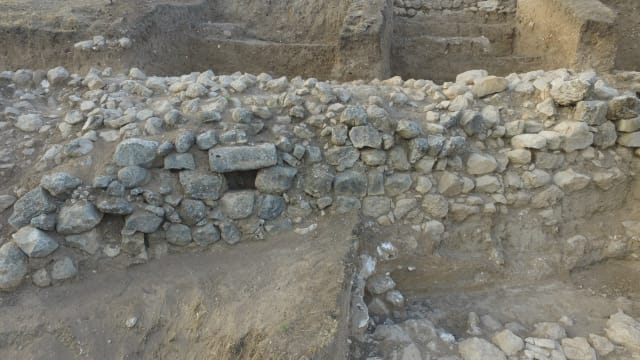
#9 – Archaeologists Say Evidence Points to Identification of Emmaus (September 2019)
A group of archaeologists excavating at Kiriath Yearim have uncovered clues that they say may identify the site as biblical Emmaus. The excavators unearthed a set of fortifications that are 2200 years old, which they believe were built by the Seleucid general Bacchides, who defeated Judah Maccabee at the Battle of Elasa. The recently discovered walls are up to three meters thick and still stand up to two meters tall in some places. They were dated to the Hellenistic era by means of pottery and Optically Stimulated Luminescence, which reveals when a certain material was last exposed to sunlight. According to 1 Maccabees 9 and Josephus’ Antiquities, Bacchides built a group of protective fortresses around Jerusalem. The excavators point out that, while most of the places listed can be identified with sites north, south and east of Jerusalem, Kiriath Yearim, located 7 miles west of Jerusalem, is not on the list by that name. However, the lists do include a site to the west called Emmaus. Israel Finkelstein and Thomas Romer have suggested that, since there are no other major Hellenistic fortresses west of Jerusalem, Kiriath Yearim and the adjacent village of Abu Ghosh ought to be identified as Emmaus. They point out that it matches the biblical description of being 60 stadia (7 miles) from Jerusalem (Luke 24:13-35). Other scholars have pointed out that there is not yet enough concrete evidence to identify Kiriath Yearim as Emmaus, and that there are other sites nearby that have been identified as the New Testament town were the Lord Jesus met Cleopas and a friend after his resurrection in Luke 24.
Read more about this discovery here: https://www.haaretz.com/amp/archaeology/.premium.highlight.MAGAZINE-israeli-archaeologists-may-have-found-emmaus-where-jesus-appeared-after-crucifixion-1.7774167
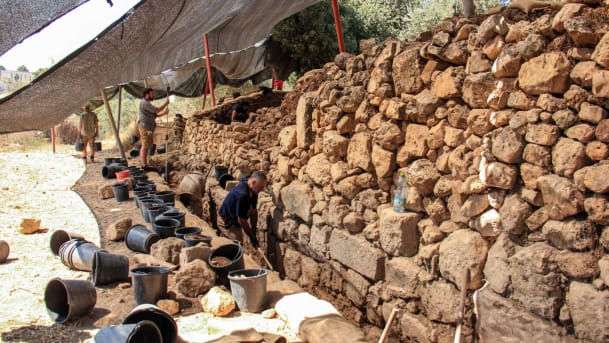
#8 – New DNA Study Suggests Philistines Came from Crete (July 2019)
A new study analyzing DNA from skeletons at the cemetery at Ashkelon suggests that the Philistines moved to the area from the regions of Crete, Sardinia and the Iberian peninsula. Researchers were able to extract DNA from the teeth and ear bones of 10 skeletons across a variety of ages. Four of the Iron Age samples taken from infants who had been buried beneath the floors of homes in Ashkelon revealed that 25-70% of their DNA matched people from the Aegean and surrounding areas. One part of the report states, “Of the 51 tested models, we find four plausible ones… The best supported one (X2P = 0.675) infers that [the group of early Iron Age individuals tested] derives around 43% of ancestry from the Greek Bronze Age Crete.” Samples taken from those who lived later had DNA that was similar to the local Levantine people, suggesting intermarriage. This would seem to affirm the biblical account, which identifies the Philistines as the “remnant of the coastland of Caphtor (Jer. 47:4), which many Bible scholars believe is the Greek Island of Crete. The Bible further records the intermarriage of Hebrew people, like Samson, and the Philistines.
Read more about this study here: https://patternsofevidence.com/2019/07/20/philistine-dna-study-supports-bible/
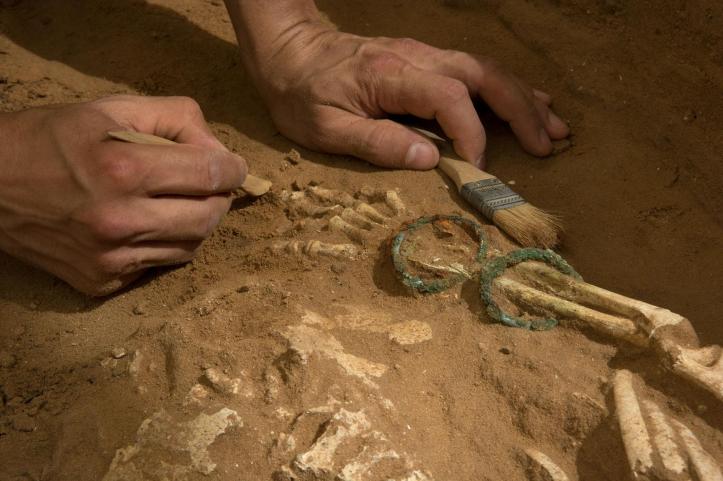
#7 – Inscribed Altar May Reference Biblical Battle (August 2019)
A recently translated inscription on a stone altar discovered in the ancient city of Ataroth in Jordan may reference the rebellion of Mesha king of Moab, described in 2 Kings 3. The 2800-year-old round, stone altar was discovered in 2010 in a Moabite sanctuary. A translation of the inscription on the altar was recently published in the journal Levant. The altar bears two inscriptions: one that records quantities of bronze, likely looted from the conquered city, that were presented as an offering, and the other describes Ataroth as “the desolate city,” and “4,000 foreign men” who were scattered and abandoned in great number. Both the inscription and the archaeological context in which the altar was found date to the late ninth or early eighth century BC. The importance of the inscribed altar, and its connection to the battle described in 2 Kings 3, lies in the fact that the Moabite Stone/Mesha Stele records how the King of Moab conquered the Israelite city of Ataroth during the rebellion. It states: “Now the people of Gad had dwelt in the region of Atarot for a long time, and the king of Israel built Atarot for them. But I fought against the city and I took it, and I killed all the people, and the city was a satiation for Kemosh and for Moab.” The researchers conclude that the altar was placed in a Moabite sanctuary at Ataroth to commemorate this event. If this interpretation is correct, it would confirm that the Moabites succeeded in conquering Ataroth during Mesha’s rebellion. The inscription also demonstrates that 2800 years ago, the Moabites had skilled scribes and used their own script.
Read more about this discovery here: https://www.livescience.com/alter-tells-story-of-biblical-war.html
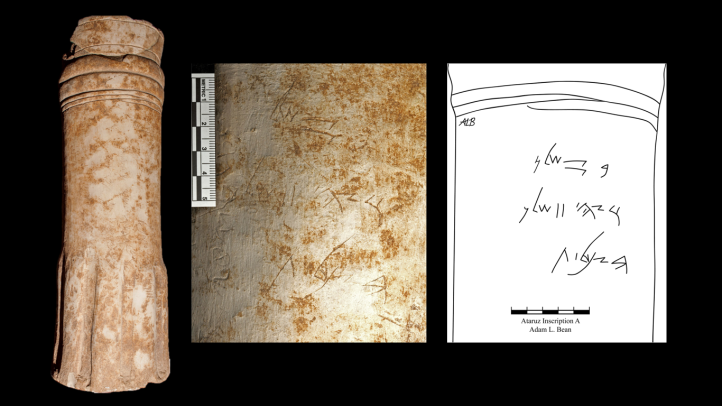
#6 – Monumental Staircase Unearthed at Hazor (August 2019)
A monumental staircase, first excavated at Hazor in 2018, has been conserved and is now open to the public. The seven basalt steps are 4.5 meters wide, and exhibit remarkable craftsmanship. They hint at the grandeur of the ancient city of Hazor, which is described in the Bible as the “head” of the Canaanite kingdoms (Josh. 11:10). The excavators believe that there are more stairs to be uncovered and that they may lead from the paved courtyard into the palace complex. Reports of the dating of these steps have been somewhat ambiguous and seem to be reported from the perspective of the late-exodus theory (ca. 13th century BC). It appears that the staircase was constructed in the Late Bronze Age, and then were part of the city that was destroyed around 1200 BC. While those holding to a late-exodus theory believe that this destruction happened under Joshua’s leadership, a straightforward reading of Scripture places the Conquest in the 15th century BC (ca. 1406 BC). The Bible also describes the Israelites defeating Jabin, King of Hazor, under the leadership of Deborah and Barak, and it is likely this destruction of the city that is being referred to in media reports (Judges 4:24).
Read more about this discovery here: https://www.jpost.com/Israel-News/Staircase-of-3500-years-old-biblical-palace-revealed-in-Tel-Hazor-596644
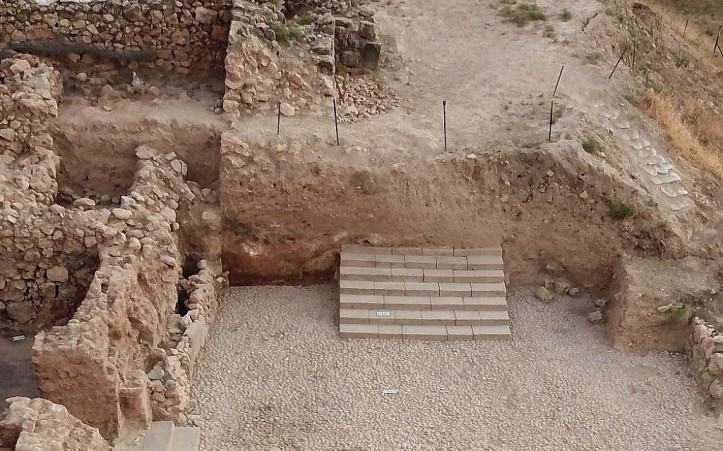
#5 – Seal Impression of Royal Steward Discovered in Jerusalem (September 2019)
A bulla (clay seal impression) dating to the seventh century BC was recently discovered by the City of David sifting project. The earth that was sifted came from an excavation in 2013 beneath Robinson’s Arch at the foundations of the Western Wall in Jerusalem. The bulla itself is one centimeter in size and bears the Hebrew inscription “Adoniyahu asher al habayit,” which literally translates as “Adoniyahu, who is over the house.” The name, Adoniyahu, occurs three times in Scripture, with the most famous person being a son of King David and Haggith, known by his shortened name, Adonijah (1 Kings 1:5). The title in the inscription, Asher al Habayit, means “Royal Steward” which is a biblical title mentioned in Isaiah 22:15. Some have suggested there may be a link between this seal impression and a grave discovered 150-years ago, which also dates to the seventh century BC and is inscribed with the phrase Asher al Habayit. Interestingly, the name of the grave’s owner is only partial, and ends with the same three letters as on then recently discovered bulla. Others believe the grave to be that of the famous steward, Shebna, also known as Shevaniyahu, who was deposed from office for carving a grave for himself (Is. 22:15-19).
Read more about this discovery here: https://www.timesofisrael.com/tiny-first-temple-seal-impression-inscribed-with-biblical-royal-stewards-name/

#4 – Evidence of Babylonian Destruction Unearthed in Jerusalem (August 2019)
Excavators from the Mount Zion Archaeological Project have announced the discovery of evidence of the Babylonian conquest of Jerusalem in 587/586 BC. While digging in an Iron-Age structure within the old city walls, they unearthed layers of ash that contained arrowheads, lamps, potsherds, and a piece of gold and silver jewelry. The arrowheads, known as “Scythian arrowheads,” were commonly used by Babylonian soldiers, having been found at other sites. The jewelry may have been a tassel or an earring and appears to depict a silver bunch of grapes attached to a gold clasp. It testifies to the biblical description of the wealth of Jerusalem prior to Nebuchadnezzar’s destruction of the city. The pottery that was discovered in the ash layer helped date the finds. While the discovery of an ash layer does not automatically point to the Babylonian destruction, the excavators of the Mount Zion Archaeological Project believe the layer can be dated to this event because of the unique collection of artifacts and the context in which they were found. Archaeologist, Shimon Gibson, states: “It’s the kind of jumble that you would expect to find in a ruined household following a raid or battle: Household objects, lamps, broken bits from pottery which had been overturned and shattered… and arrowheads and a piece of jewelry which might have been lost and buried in the destruction.” This discovery affirms again the destruction of Jerusalem under Nebuchadnezzar described in 2 Kings 25.
Read more about this discovery here: https://inside.uncc.edu/news-features/2019-08-12/evidence-587586-bce-babylonian-conquest-jerusalem-found-mount-zion

#3 – El Araj Excavations Unearth First-Century Artifacts and a Byzantine Church (July 2019)
The excavations at El Araj – one of the leading candidates as the site of Bethsaida – have unearthed more evidence of first-century Jewish occupation, items related to the fishing industry and a Byzantine church. Numerous artifacts, including the handle of a Galilean cooking pot and two spouts from Herodian oil lamps, testify to occupation at the site during the first-century BC. In addition, hundreds of lead fishing weights have been discovered, as well as a chalk mold for making lead fishing weights. Finally, the stunning mosaic floors of a Byzantine church were uncovered for the first time in almost 1500 years. A limestone frieze that once decorated a window or door and several gold-gilded glass tesserae were also found. They excavators believe they may be uncovering the remains of the Byzantine Church of the Apostles that was supposedly built over the house of Peter and Andrew in Bethsaida, which was described by Willabald, bishop of Bavaria, in 725 AD.
Read more about this discovery here: https://www.haaretz.com/archaeology/.premium.MAGAZINE-archaeologists-claim-to-have-found-the-church-of-the-apostles-by-sea-of-galilee-1.7538758
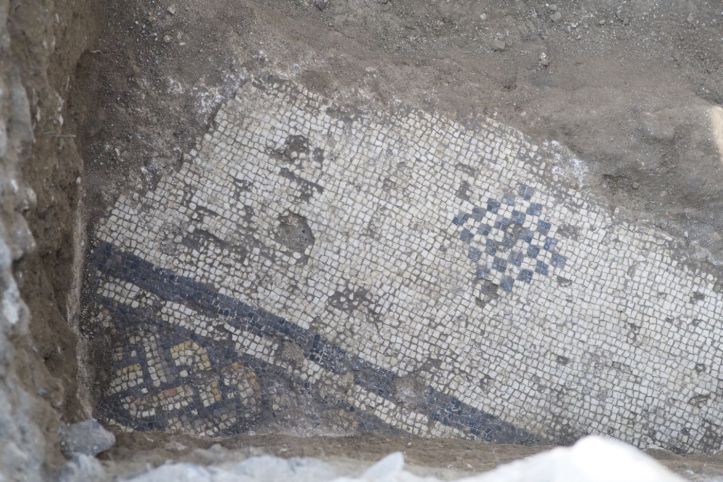
#2 – Horns of an Ancient Altar Discovered at Shiloh, Israel (August 2019)
Three altar horns were discovered during this year’s excavations at Shiloh, Israel, led by the Associates for Biblical Research (BibleArchaeology.org). Horn one: 38 cm long and 23.5 cm wide (15” x 9.25”) comprised part of an Early Roman wall. Horn two: 18 cm long and 12.5 cm wide (7” x 5”) lay about three meters (10’) to the southwest. Horn three: 38 cm long and 20 cm wide (15” x 7.8”) emerged from a destruction matrix in an adjacent square. The elevation of horns one and two was virtually identical, but the elevation of horn three measured one meter (3.2’) lower. All three horns came from the general area of a monumental Iron Age building (1177-980 BC) which orients east-west. The same area yielded a ceramic pomegranate and a Thutmose III scarab in 2018. The original altar likely included four horns, like the four-horned Beersheva altar that was dismantled and placed in secondary usage in King Hezekiah’s 8th century reforms (2 Chronicles 29-32, 2 Kings 18:4). Other artifacts recently discovered by the ABR team at Shiloh include a ceramic pomegranate, a kobaat (ritual chalice), and numerous pithoi, collar-rimmed jars that were found in storage rooms and likely held grains and fruits brought as tithes by the Israelites. These objects are evidence that the Israelites worshiped the Lord at Shiloh – the location of the Israelite tabernacle for over 300 years – as described in Scripture.
A peer-reviewed article by Tim Lopez, Kevin Larsen, Mark Hassler, and Scott Stripling is forthcoming.
Read more about this discovery here: https://www.jpost.com/Israel-News/Was-the-corner-of-Gods-altar-found-in-Shiloh-West-Bank-606477?fbclid=IwAR27qgSo0dMYvlKOQQDPom3KtXjqddKwHEpxa8TV1-AFwxVJr3aIGHC3qGg
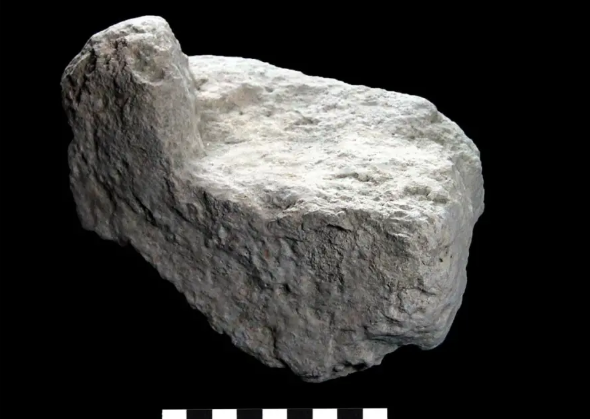
#1 – Biblical Names Discovered on a Seal and Bulla in Jerusalem (April 2019)
Archaeologists digging in Jerusalem unearthed a 2600-year old bulla, a clay seal impression of an ancient seal which bear biblical names. The paleo-Hebrew inscription on the bulla reads, “[belonging] to Nathan-Melech, Servant of the King.” Both the title “Servant of the King” and the name are found in the Bible, with Nathan-Melech being an official in the court of King Josiah in 2 Kings 23:11. The bulla was discovered in situ in the remains of a building that was destroyed in the sixth century BC, likely during the Babylonian destruction of Jerusalem in 587 BC. Given the size of the building, the finely cut ashlar stones used in its construction and the remnants of a polished plaster floor, archaeologists have identified it as an administrative center. While scholars cannot be certain that this bulla belongs to the Nathan-Melech of the Bible, four things point towards this identification: the rarity of the name, the fact it was found in a large, First Temple-era administrative building, the reign of King Josiah in the mid-seventh century BC is relatively close to the time of the destruction, and the title refers to a person who was a royal official. Epigrapher Christopher Rollston, who is known for his cautious approach to inscriptions, has concluded that the “data converges to make it probable that the figure of the Bible and the figure of this bulla are one and the same…as for me, I am entirely comfortable considering it most likely, or virtually certain, that 2 Kings 23:11 and this bulla refer to the same person.”
Read more about this discovery here: http://www.rollstonepigraphy.com/?p=870
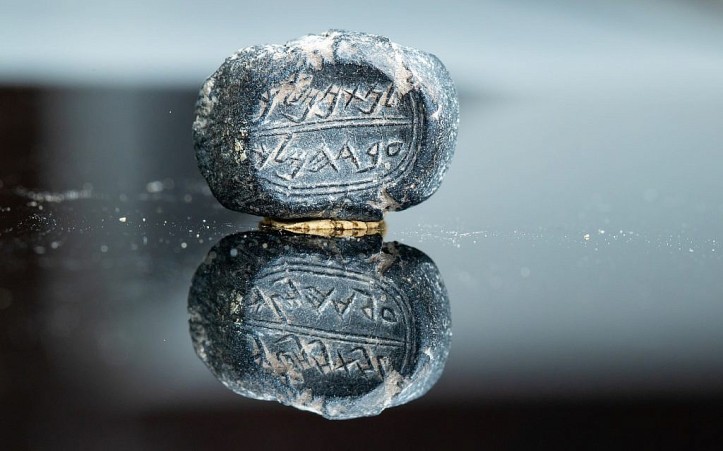
Each year, discovery-after-discovery adds to our knowledge of the biblical world and helps us understand Scripture in greater detail. None of these discoveries prove the Bible is true. They do, however, add to the mounting evidence that demonstrates that the Bible is historically reliable. 2019 was a year in which significant discoveries were unearthed; I look forward to the discoveries in the coming year.
Stay up-to-date on the latest BREAKING NEWS in biblical archaeology each week here: https://biblearchaeology.org/current-events-list
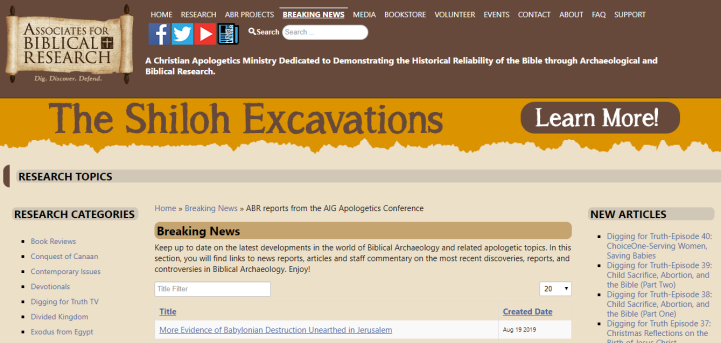

Nice. Just one correction, though. The Ataroth inscription was published in 2018, not 2019, although 2019 is when the media caught up to it. Here’s the paper: https://www.tandfonline.com/doi/abs/10.1080/00758914.2019.1619971
Yes, it was first published in The Journal of the Council for British Research in the Levant in 2018, but was published online in July 2019 for the wider audience to access. Thus, I included it in my 2019 list, as that is when the reports became widely known. Here is a second paper about the find. https://www.tandfonline.com/doi/full/10.1080/00758914.2019.1620010
Ah, I see then. Thanks for the paper.
[…] For the record, I used the same criteria I do for my annual top ten lists: […]
[…] again, they were in the news. Christianity Today featured an article and Biblical Archaeology Review listed them as #3 of the top ten discoveries in […]
[…] Este objeto se consideró tan importante que apareció en varias de las listas sobre los hallazgos más importantes del 2019; fue el nr 8 en la lista de Christianity Today, pero incluso llegó a ocupar el nr 2 en la lista de Biblical Archaeology Report. […]
[…] Biblical Archaeology Report […]
[…] again, they were in the news. Christianity Today featured an article and Biblical Archaeology Review listed them as #3 of the top ten discoveries in […]
Thank you.
Thank you for the information. Your ministry is very helpfull. Please continue with the exelent work.
Have I not commanded you? Be strong and of good courage; do not be afraid, nor be dismayed, for the Lord your God is with you wherever you go.”
[…] can also read my past top ten lists here: 2019, 2018, 2017, and 2016, as well as the Top Ten Discoveries of the Decade (2010-2019), […]